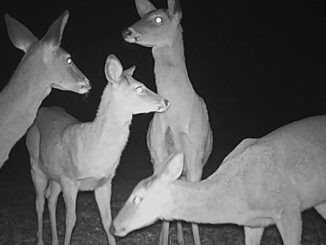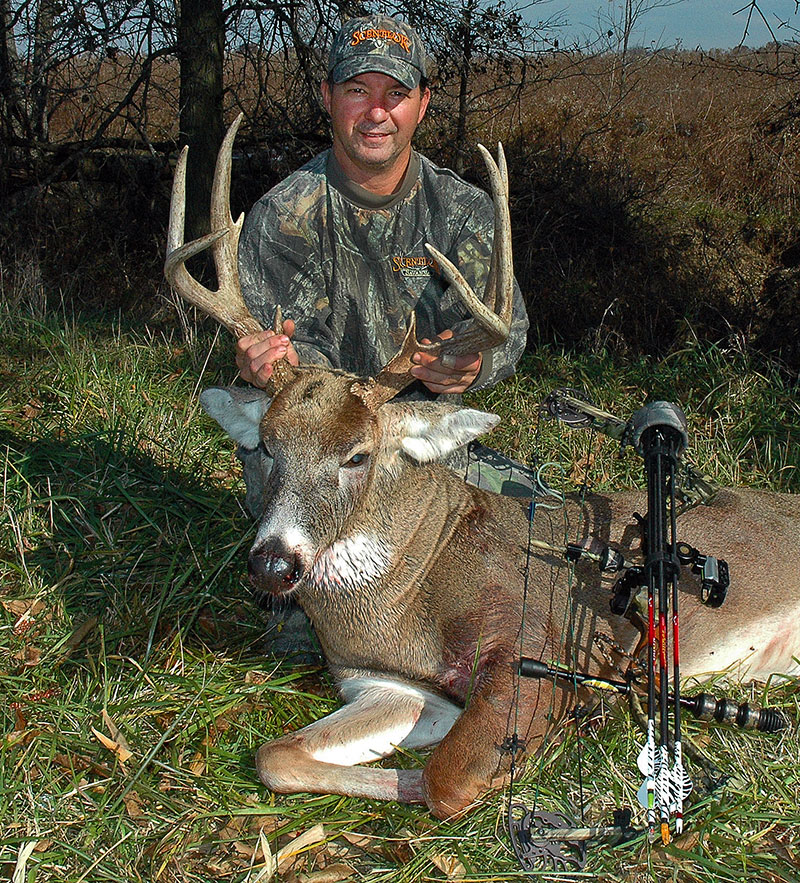
Bottlenecks for deer provide strategic “openings” for deer hunters
Dr. Larry Marchinton, retired professor of wildlife science at the University of Georgia and a nationally-known deer researcher, said, “To take a buck at any time of the year, whether you’re hunting public or private lands, your odds are best when you’re hunting a funnel.”
He knows this subject well as he started the UGA Deer Lab in the 1960s and co-authored the definitive book, “Quality Whitetails: The Why and How of Quality Deer Management.”
“Webster‘s Dictionary” defines a funnel as a bottleneck that, “concentrates, channels or focuses anything.” Bottlenecks are important to deer hunters because generally the deer living on both ends of a bottleneck will travel through that bottleneck to move from one place to the other — giving hunters more opportunities to take them. Marchinton said that funnels:
- concentrate deer movement;
- enable hunters to get the most deer within bow or gun range; and
- provide places where hunters most likely will see deer during the season.
The more funnels you pinpoint on the property you hunt, and the more you learn about when, how and where to hunt those funnels, the more success you’ll have hunting deer this season. You possibly can alter funnels to provide even better deer hunting as well. Hunting funnels seems to be the most productive during the rut when bucks are chasing does almost constantly.
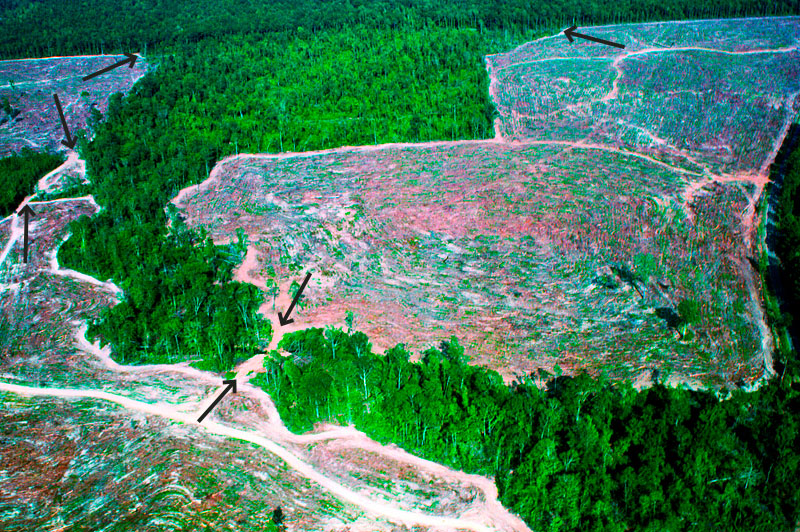
Identifying funnels
A funnel or a bottleneck is formed when two expanses of land neck-down to a small patch of thick cover through which deer can pass without being seen. Think about an hourglass with sand in one end to understand what a funnel looks like. The sand must pass through a small opening in the middle of the hourglass for the sand to move from one side of the hourglass to the other side. Take that hourglass concept, and apply it to the property where you hunt to locate an hourglass shape on that land.
Try to identify where:
- the corners of two fields come together and make a small bottleneck between two large woodlots on either side of the bottleneck;
- a pine plantation corners into another pine plantation with hardwoods on either side of that bottleneck;
- a creek or a stream bends into a young clear cut, creating a bottleneck with hardwoods on both the stream edge and the edge of the pine plantation;
- an agricultural field corners into a road with a woodlot on either side of that narrow neck;
- a huge field and two narrow points of woods neck-down the field to a small opening;
- a river bends into the land, bends out and then bends back in again, creating a bottleneck between the two bends of the river; and
- a small bridge or fallen trees across a creek provides a place where deer can travel beneath it without being seen.
Hunters today are using aerial photos and hunting apps to survey properties and look for funnels. They’re also flying drones over the lands when the leaves are off the trees.
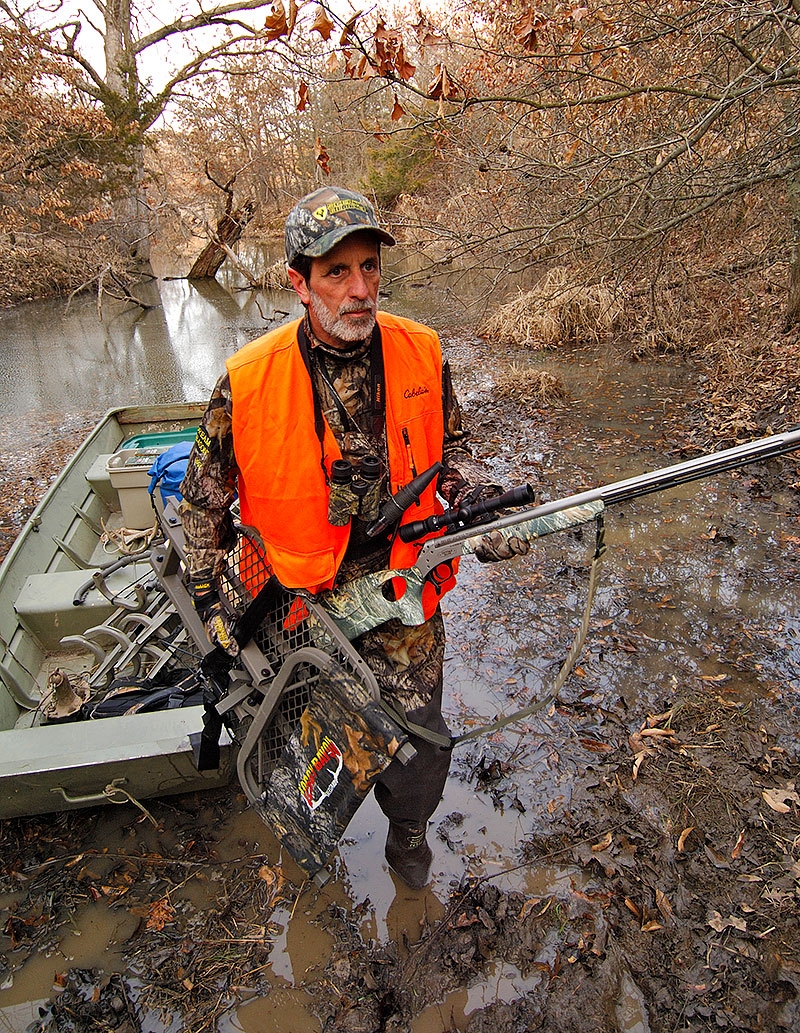
Louisiana specific funnels
My longtime friend, Kert Granier, originally from Thibodaux, has loved to hunt deer his entire life. He hunts and takes nice bucks every year in several different states. Granier recommends that when hunting in Louisiana these are “funnels” to look for that will pay buck dividends for you.
- Ridges and beaver dams – Get in the woods before the fall rains come, and search for places where flooded timber will occur in the winter. Look for ridges and beaver dams that will become invisible when the woods flood. Deer may travel these high points through the water then.
- Islands – Pinpointing islands that will become difficult to reach once the water comes up and realizing that you’ll probably have to travel in a canoe, a kayak, a johnboat or a pirogue to reach them means you’ll be hunting where others aren’t prepared to hunt.
- Sugar cane fields – A sugar cane field is similar to a corn field where deer like to hide and move in and out without being seen. Walking around a sugar cane field before it’s cut can show you the trails deer will use to move in and out of the cane.
- Soybean fields – Louisiana produces 58+ million bushels of soybeans per year, with soybean fields found primarily in the central and northeastern sections of the state. Even when the soybeans are cut and harvested, plenty of soybeans will be on the ground for the deer to eat.
I became aware of the value of hunting underwater ridges and flooded timber for deer after coming to the edge of flooded timber on land my family and I had leased. I heard the whispered words, “John, get out of here.”
I recognized my brother Archie’s voice. I looked in all directions but couldn’t see him until he waved to me. He’d worn waders to go out in the water and used a climbing tree stand to get 15 feet off the ground in the flooded timber. He told me when we returned to camp that he’d found a beaver dam there and had seen deer traveling across it, after checking the wind and studying the water’s edges for hunters.
Archie said, “I saw how relaxed the deer were traveling the top of that beaver dam. I’ve taken two nice bucks there this season.”
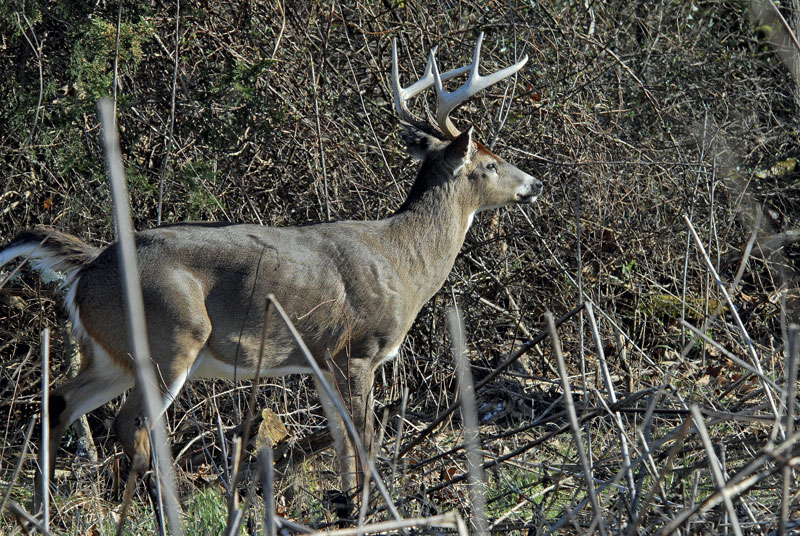
Shrinking a bottleneck
You’ll see more deer passing through a funnel than you’ll spot on either end of it, if you’ll hunt that bottleneck with a wind that blows your scent away from that pinch point. You may have to shrink some funnels before the season starts to get bucks within shooting range. Decide which side of the bottleneck you want to hunt, and then make your plans. Learn the prevailing winds on the property where you’ll hunt. The prevailing wind for instance in central Louisiana is primarily from the east at the beginning of bow season and mostly from the north later near the end of deer season.
You can use limbs, bushes and sticks to create a small, natural wall, 3 to 4 feet high, to shrink a bottleneck. Then extend that brushy wall all the way across the funnel to within 30 yards of your tree stand, if you’re bowhunting, or 50-60 yards, if you’re gun hunting. Angle it like the neck of a funnel. You’ve actually created a smaller funnel inside the funnel. Of course, deer simply can hop over that little brushy wall, if they want. The deer will hit that brushy wall, generally follow it to its end and walk around it, putting every deer that comes through the funnel within range of the hunter’s bow or gun.
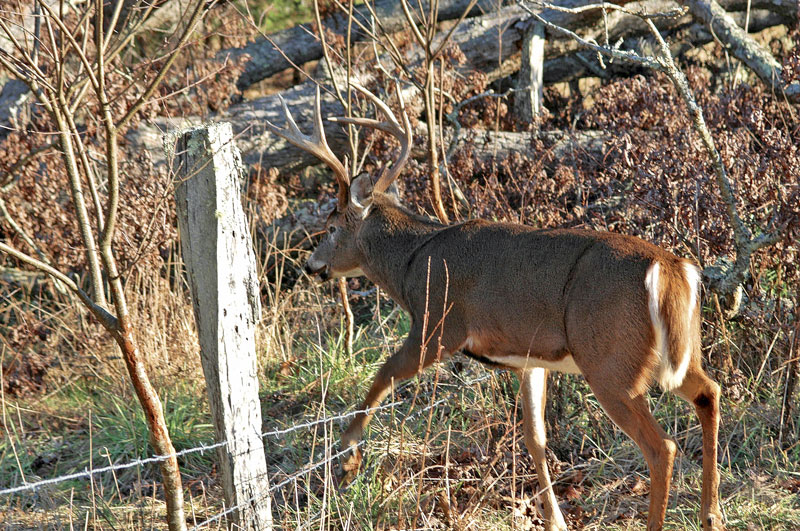
You also can shrink a funnel by using a fence. Pick a spot where you want to put your tree stand within bow range of a fence you’ve noticed deer walking beside. Use a forked stick to make the gap in the fence somewhat wider between the middle two strands of a barbed-wire fence. Make sure you have the permission of the landowner before you do this. Check out whether or not any cattle or other livestock may come through that hole in the fence on either side. You don’t want to create problems. You’ve now created a hole for the deer to go through, and any deer walking up and down the fence now has a funnel it can use to move from one side of the fence to the other. Most old, unused fences have natural breaks in them.
Some funnels may have two or three trails going through them. You’ll want all the deer that travel through the funnel to come down one trail. Solve this problem by creating a funnel-shaped barrier across the two trails that you don’t want the deer to walk down and forcing them onto the trail where you do want them to walk.
Ronnie Groom of Florida, an avid deer hunter and lecturer for deer hunting schools, said, “If I locate a funnel with several trails running through it, two to three days before hunting there, I’ll take several of my dirty socks and hang them at the approximate level of a deer’s nose over all but one of the trails. Then the deer will take that trail where I’ll be set-up.”
The most reliable way to successfully hunt funnels is to not tell anyone where you’ve discovered a funnel. Other deer hunters may hunt that funnel with a wrong wind and scare off the deer or perhaps even take the buck you’ve been hunting.
